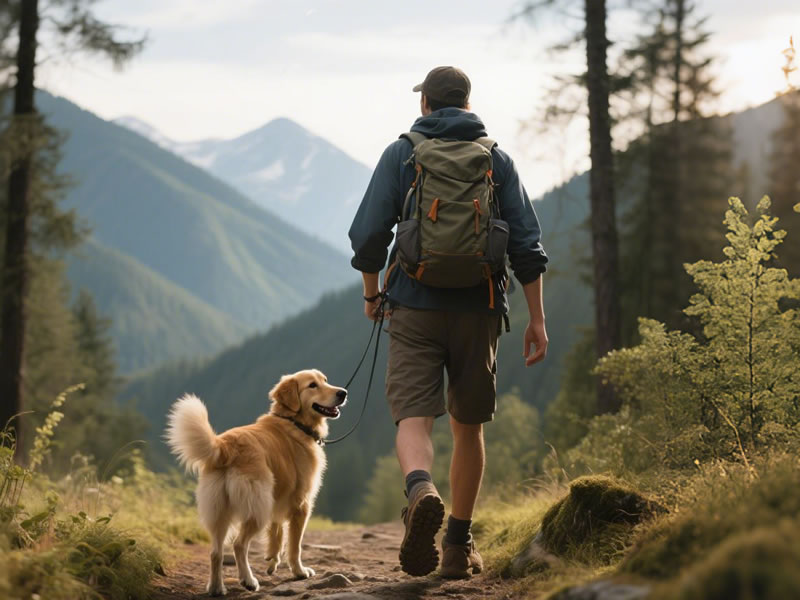How to hike with a dog safely?
How to Hike With a Dog Safely? The Complete Trail Dog Guide
Hiking with your canine companion can double the fun—but requires special preparation. According to veterinary studies, 42% of trail-related dog injuries are preventable with proper precautions. This guide covers everything from paw protection to emergency preparedness so you and your pup can adventure safely together.

1. Pre-Hike Preparation
Trail Selection Checklist
✅ Dog-friendly trails: Check park regulations (many national parks prohibit dogs)
✅ Distance: Match to your dog's fitness level (start with ≤5 miles for beginners)
✅ Terrain: Avoid sharp rocks if your dog isn't boot-trained
✅ Weather: ≤65°F ideal (paws burn at 85°F on asphalt)
Pro Tip: Use apps like AllTrails to filter dog-friendly hikes with water sources.
Vet Visit Essentials
- Current rabies/parvo vaccinations
- Flea/tick prevention (ask about Lyme disease vaccine)
- Microchip updated with your contact info
2. Must-Pack Gear
Basic Dog Hiking Kit
- Collapsible bowl (2L water capacity minimum)
- Dog backpack (≤25% body weight max)
- 6ft leash (retractable leashes dangerous on cliffs)
- Paw protection: Musher's wax or booties
- First aid kit: Tweezers, vet wrap, dog-safe antiseptic
Emergency Extras
- Rescue sling (for carrying injured dogs)
- Glow stick collar (for night visibility)
- Recent photo (for search efforts if lost)
3. On-Trail Safety Protocols
Heat & Hydration Management
- Watch for overheating: Excessive panting, bright red gums, stumbling
- Water breaks: Every 30 minutes in heat
- Cooling tricks: Wet bandana around neck, seek shade
Wildlife Encounters
- Leash laws exist for a reason (protects dogs from predators)
- Essential commands: "Leave it" (for snakes/rodents), "Close" (for cliffs)
- Bear country: Attach bear bell to collar
4. Paw Care System
Pre-Hike Prep
- Trim nails to prevent snagging
- Apply paw wax before rough terrain
During Hike Checks
- Inspect paws every hour for:Cuts/abrasionsBurrs between toesIce/snow buildup in winter
Post-Hike Care
- Rinse paws to remove irritants
- Check for ticks (especially between toes)
5. Fitness & Training
Build Endurance Gradually
- Start with short local walks carrying empty pack
- Increase distance 10% weekly
Essential Trail Commands
- "Wait" – Pause at obstacles
- "Behind" – Move off narrow trails
- "This way" – Redirect from hazards
6. Breed-Specific Considerations
Best Hiking Breeds
- High-energy: Australian Shepherds, Vizslas
- Sturdy paws: Bernese Mountain Dogs, Labs
Special Care Needed For
- Short-nosed breeds (pugs, bulldogs) – Overheat easily
- Small dogs – May need carrying assistance
7. First Aid for Common Issues
Cuts/Paw Injuries
- Clean with saline
- Apply dog-safe antiseptic
- Wrap with vet tape + sock
Tick Removal
- Use tweezers to grasp head
- Pull straight out steadily
- Save tick for disease testing
Heat Stroke Emergency
- Move to shade
- Apply cool (not cold) water to groin/armpits
- Offer small water amounts
- Seek vet immediately
8. Post-Hike Recovery
- Check for dehydration (pinch skin – slow snapback = concern)
- Massage sore muscles
- Increase next-day calories by 25%
Trail Etiquette Reminders
- Yield to other hikers (leash & step off trail)
- Pack out all waste (use biodegradable bags)
- Never let dogs chase wildlife
"A tired dog is a happy dog—but only if kept safe!"
What's your best trail dog tip? Share below to help other hiking pups!






